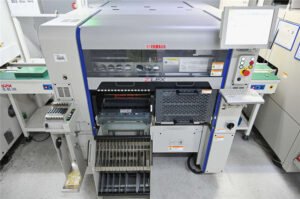- +86 15364019151
- sales2@excelcircuit.com
- Mon - Fri: 9:00 - 18:00
Month: August 2021

PCB SMT
What is BGA in SMT chip processing?
Earphone and Headphone manufacturers all tend to be specialized in a certain niche. While they may cover one or more categories, you should only be on the lookout for suppliers that are making your type of earphones or headphones.
August 21, 2021

PCB Layout
Various design templates maintain standard uniformity
Important factors to consider include comfort, audio quality, noise cancelation, and roam range. Whether you’re looking for a device with long battery life or one with ultra-comfortable design, we compiled a comprehensive list of the best office headsets for making seamless calls.
August 21, 2021

PCB SMT
PCBA Patch Processing Reflow Soldering Quality Assurance
Reflow soldering is an indispensable manufacturing stage in PCBASMT patch processing, and reflow soldering will continue to endanger the soldering quality of SMT patch processing. Nowadays, most of the SMT production processes and soldering in PCB processing factories are all applied reflow soldering processes. So what exactly is reflow soldering? The following technical professional PCBA chip processing manufacturer Excel Circuit will give everyone a simple introduction.
August 10, 2021

PCB Info
What is BOM DIP SMT SMD?
SMT patch processing term explanation: what is BOM, DIP, SMT, SMD In the 1980s, the SMT production process became more and more perfect. The mass production and manufacture of components used for surface mounting technology was greatly reduced. Various types of equipment with good technical performance and low prices were successively available. Electronic equipment assembled by SMT is available. Small size, good performance, complete functions, and low price advantages, so SMT, as a new generation of electronic assembly technology, is widely used in aviation, aerospace, communications, computers, medical electronics, automobiles, office automation, household appliances and other fields The electronic equipment is installed in the United States. Next, let’s take a look at the explanation of SMT patch processing terms: what is BOM, DIP, SMT, and SMD.
August 9, 2021

PCB Info
How the PCB is produced?
Although PCB is already well-known, it can even be said that we deal with it every day. So, what exactly is it? How is it produced? How many production processes are there? Let’s walk into the PCB manufacturing factory in Shenzhen, China for some exploration! 2. The production process of PCB 2.1 Design board receiving and inspection The engineering department of the factory accepts and checks the design board file sent by the customer. The contents of the inspection include: whether the design document is appropriate, whether the layer is missing, ensuring that there is a border on the file, whether the drilling file exists, etc. If the design is flawed, the engineering department will inform the designer to modify it. If there is no design problem, mass production can be carried out according to the design. 2.2 Print the design into transparencies Print the checked design documents into transparencies. The light is projected onto these films, and the photoresist is exposed on the circuit board in a way similar to exposing photos. The design of the circuit boards is like a movie, lifelike and particularly vivid. 2.3 Cutting and edge polishing of glass fiber The glass fiber is selected and cut and polished. Select FR-4 type glass fiber with copper plated on the top and bottom layers, and then cut the designed size on the cutting machine. Because the edge of the glass fiber is too rough, we need to polish its edge. 2.4 Inner layer production The top and bottom layers of glass fiber are covered with plastic dry film and are hardened under UV exposure. After the two sides of the glass fiber are hardened with dry film, the machine is used to press them together, which can effectively prevent the copper from being dissolved by the alkaline liquid in the subsequent process. 2.5 Etching process The purpose of the entire etching process is to remove excess copper and photoresist from the copper plate, and complete the prototype of the PCB after a series of processes. Remove excess copper and photoresist from the laminated glass fiber, complete the etching process through the baptism of alkaline solution, and finally complete the entire etching process through the combination of film removal, washing, drying, and drying. 2.6 Automatic optical inspection (AOI) and editing vacuum (PP) The purpose of automatic optical inspection is to check the etching of the inner layer to ensure that the etching of the inner layer is normal. Attach a yellow patch similar to epoxy to both sides of the board to increase the bonding force. 2.7 High temperature and high pressure treatment After 200 degrees Celsius and 27 kilograms of pressure, the epoxy resin in the melted prepreg glues the PCB board on both sides to complete the lamination. 2.8 Drilling technology Drilling is to use a machine that automatically replaces the drill bit to drill out the required holes according to the design. There are three types of holes on the PCB board: through holes, blind buried holes, and mechanical holes. In this step of drilling, holes can be punched out as needed to facilitate subsequent operations such as welding of components. 2.9 Electroplating process Electroplating requires a very complete chemical process to be completed. After drilling, the areas without copper are plated with copper, so that the PCB can be turned on, and then the copper in the hole is thickened again, because the plating is not thick at one time and requires multiple operations. 2.10 Solder mask and drying The electroplated PCB board needs another automatic optical inspection (AOI) before it can be painted with a green liquid solder mask and then dried. When it comes to the color of the PCB board, everyone’s first reaction is definitely green, so how did it come from? The secret lies in the solder mask. 2.11 Welding mask removal, washing and screen After the removal, the solder mask needs to be cured. After keeping the original shape, we need to wash off the unnecessary things, remove the pads of the circuit board, and finally paste the silk screen for the customers in need. 2.12 Hot air treatment (HASL) Hot air processing involves immersing the circuit board in liquid solder, and after pulling it out, blow off the excess with a hot air sheet. 2.13 PCB cutting Since there are many different small pieces on each large PCB, they come from many different customers. Therefore, we need to cut it. 2.14 Short circuit and open circuit test Do you think this is over? NO! NO! NO! There is also the most important link. We need to perform short-circuit and open-circuit tests on the circuit boards to ensure that each circuit board can conduct normally. The miniature robotic arm quickly verifies the electrical connection between the two pads, one after the other, which is really incredible. 2.15 Packaging and shipping PCB packaging and transportation are also very particular. After a series of processes such as sorting, packaging, and labeling are completed, they can be shipped to customers. Generally, customers can complete the order within 24 hours after placing an order. For domestic orders, it can be delivered within 1-2 days, and for international orders, it takes about a week. 3. Summary After reading the above sharing, you must have discovered that the factory production of PCB boards has a total of about 15 processes, whether it feels particularly complicated. In fact, with the development of science and technology, many jobs that require manpower are slowly being replaced, and the industrial system and industrial technology are constantly being improved and updated. I believe that in the near future, the PCB industry will also have many new innovations. The PCB board has been made, so how are the miniature components soldered to the circuit board? We will announce the next issue, so stay tuned!
August 9, 2021
